Mark Anthony Neal's Blog, page 728
June 9, 2015
Sounds of a Global Black Analysis: The Berlin Sessions II (a mix by DJ Lynnée Denise)
 "I started these liner notes from an airport in Italy on my way to attend the
Black Portraitures II: Imaging the Black Body and Re-staging Histories
, conference hosted by NYU in Florence. I was inspired by the fact that a large number of the diaspora's brightest thinkers, writers, artists and scholars would be traveling from different corners of the world to “explore the impulses, ideas, and techniques undergirding the production of self-representation and desire, and the exchange of the gaze from the 19th century to the present day in fashion, film, art, and the archives. Please accept my contribution to the conversation and move to the sounds of a Black global analysis, my Black global imagining. I feel deeply connected to my people and the music on this volume of the series was inspired by my focused nomadic journey. Come with me." -- DJ Lynnée Denise
"I started these liner notes from an airport in Italy on my way to attend the
Black Portraitures II: Imaging the Black Body and Re-staging Histories
, conference hosted by NYU in Florence. I was inspired by the fact that a large number of the diaspora's brightest thinkers, writers, artists and scholars would be traveling from different corners of the world to “explore the impulses, ideas, and techniques undergirding the production of self-representation and desire, and the exchange of the gaze from the 19th century to the present day in fashion, film, art, and the archives. Please accept my contribution to the conversation and move to the sounds of a Black global analysis, my Black global imagining. I feel deeply connected to my people and the music on this volume of the series was inspired by my focused nomadic journey. Come with me." -- DJ Lynnée Denise
Published on June 09, 2015 14:18
June 8, 2015
Witnessing While White and the Violence of Silence by Simone C. Drake
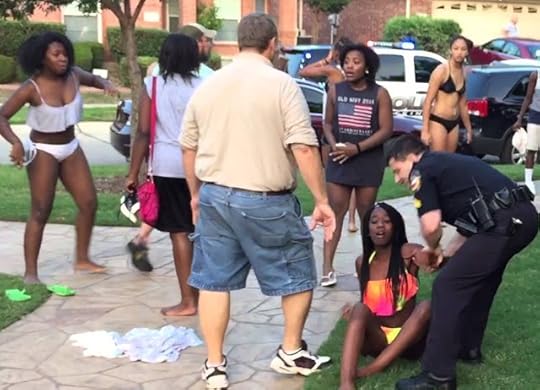 Witnessing While White and the Violence of Silenceby Simone C. Drake | @SimoneCDrake | NewBlackMan (in Exile)
Witnessing While White and the Violence of Silenceby Simone C. Drake | @SimoneCDrake | NewBlackMan (in Exile)On June 5, 2015, the Honorable Minister Louis Farrakhan did an interview with New York’s 105.1 The Breakfast Club radio program that was an hour and a half long black public service announcement. Compared to his heyday in the late decades of the twentieth century, Farrakhan has been relatively invisible lately, an invisibility he attributes to mainstream media censorship.
The Black Lives Matter movement, however, along with the upcoming twenty-year anniversary of the Million Man March, has compelled Farrakhan to return to more frequent public instructions for black people and the damnation of white supremacy. His messages have been calls for social and cultural reparations. In January he called for black military personnel to divest from military service and fight racial inequalities right here in the United States. In his most recent commentary, drawing comparisons to Palestinian resistance, he proposed that peaceful protests cannot produce change for people who are already socially dead.
His speech was an ominous prelude to a doubly tragic weekend for the nation. That same evening a pool party in McKinney, Texas would turn into a scene straight out of the heyday of Jim Crow when black children are forced to leave a community pool and a 14-year-old bikini-clad black girl is thrown to the ground and pinned by a white police officer. The next day, in New York City, Kalief Browder, who as a teenager was held on Rikers Island for three years without being convicted of a crime and during that time was subjected to severe abuse by authorities and inmates, would commit suicide.
The violation of civil liberties—most notably a complete disregard for freedom of speech in Texas and an appallingly undemocratic criminal justice system in New York—received immediate media attention and public outcry.
In Texas, over seven minutes of the mayhem was caught on video. From the opening of the clip with blurred images of teenagers standing on sidewalks and in streets, and an officer running, assumedly tripping, and then MMA style rolling and jumping up to continue pursuit, I knew something was amiss. What ensued was a shameful display of the abuse of police power, and if not bad enough, the abuse was being committed by a supervisor, judging by the stripes on his uniform.
The young girl who was the subject of the violence caught on camera (who knows what happened off camera) will perhaps force mainstream media to gender the Black Lives Matter movement in ways aligned with the African American Policy Forum’s efforts to compel policymakers to bring black women and girls into dialogues on racial injustice and violence.
There is, however, culpability beyond that of the offending officer. As the teenagers stood around (or were forced to sit and lay on the ground), some seemingly confused while others indignantly expressed their contempt for the treatment, the camera periodically captured white (assumed) residents of the community.
Caddy-corner to the altercation, there was a group of white men and women watching the policing, almost like they were attending a lynching-bee. No one thought to question why the children were being treated as dangerous criminals. As the tensions escalated, several white men appeared, apparently acting as George Zimmerman-style “community watchmen.” Once the officer forces the girl to the ground by her neck and black teenage boys and girls rush toward them, a large white man stands between the two groups, keeping the teenagers from intervening.
It was clear that neither he nor the other white man were attempting to protect the girl or the teenagers from police violence being inflicted upon them, too—they were acting as perpetrators of white supremacy and heralding the abuse of police power upon black bodies. This troubling scenario of dual culpability—officer and civilian—was further evidenced by the officer’s persistent profane demands that the black teenagers disperse, while he never once told the white men to stop interfering in police business. His tacit acceptance of their presence, and their tacit complicity in the violence (and inciting of a riot, ultimately, by those who called the police) brings Farrakhan’s commentary full circle.
Farrakhan was and remains a controversial political figure; one who has repeatedly been subjected to often times unbelievable misconstruing of his words. The fact that young people are finding his words and ideas relevant today perhaps suggests why certain unnamed race leaders have sustained popularity in the mainstream public sphere and Farrakhan has not. His promise of a fearless, non-passive revolution just prior to the tragedies in Texas and New York this past weekend should rightfully have the media and authorities concerned.
When both State authorities (police officers) and civilians have the right to police black bodies, stripping those bodies of rights and dignity, people being subjected to the hypocrisy of U.S. democracy just might fight back as they did in Baltimore. And such a response would not be unprecedented—perhaps Texas has forgotten the Houston Riots of 1917, but when one history repeats itself so can another.
+++
Simone C. Drake is Associate Professor of African American and African Studies at The Ohio State University. She is the author of Critical Appropriations: African American Women and the Construction of Transnational Identity (LSU Press) and her second book, When We Imagine Grace: Black Men and Subject Making will be published next year by the University of Chicago Press.
Published on June 08, 2015 20:28
My Son Must Think I Am Psychic: On Raising a Black Teenager
 My Son Must Think I Am Psychic: On Raising a Black Teenagerby Lori Latrice Martin | @@blackbatonrouge | special to NewBlackMan (in Exile)
My Son Must Think I Am Psychic: On Raising a Black Teenagerby Lori Latrice Martin | @@blackbatonrouge | special to NewBlackMan (in Exile)I had a vision of teenagers getting arrested for "swimming while black" in a predominately white neighborhood. No, I am not psychic. I, like many, am a parent of a black teenage boy, which means I must have the power to go back in time and see the future.
We live in a predominately white neighborhood with a recreational facility that requires a gate card or passcode to gain entry. The pool, tennis and basketball courts, playground, and clubhouse are for residents and their guests.
A few weeks ago, I learned my 15-year old was meeting a small group of friends for a friendly pick-up game. The group of six boys, including my son, also went into the pool from time to time.
I was fine with my son walking the short distance to the site to play ball or sit in the pool to escape the hot sun, but I chastised him for not letting me know he invited a few friends. My concern was not that the boys would do something wrong. My main concern was the problem that their mere presence might cause for some of the predominantly white residents. The very skin the boys live in serve as a visible marker identifying the boys as trespassers, as outsiders, as criminals.
I told my son that I knew they were just going to play, but warned him what could happen if someone called the police and he could not immediately prove he was a resident and I would have no idea that the boys-classmates living in a neighboring community-were even at the facility. I told my son he and/or his friends could find themselves in handcuffs pleading his case. I acknowledged the injustice and lack of fairness at the root of our conversation.
Driving home yesterday, after a week of visiting with family hundreds of miles away, I shared the video from McKinney with my teenage son. The video showed the mistreatment of teens enjoying their summer vacation who suddenly found themselves in cuffs, thrown to the ground, and treated like their lives didn't matter. At the same time, white teens were free to come and go. Adult white males-presumably residents of the community-walked around during the confusion, seemingly basking in their white privilege, perhaps with great shame or great pride.
As a parent of a teenager, you sometimes have to be a mind reader. The look on my son's face after viewing the McKinney video, his need to exhale, the way his body slumped back into his seat, and the shaking of his head left to right, said it all.
"My mom must be psychic."
No son, I am not psychic. I know our history. I know that despite so-called "peaks of progress", pools and other public spaces, remain dangerous places for children of color to just be…
+++
Lori Latrice Martin is Professor of Sociology and African & African American Studies at Louisiana State University and the author of Black Asset Poverty and the Enduring Racial Divide and White Sports/Black Sports: Racial Disparities in Athletic Programs (Praeger Press).
Published on June 08, 2015 19:41
Soul vs. Soul: "Never Can Say Goodbye" -- The Jackson 5 + Isaac Hayes + Gloria Gaynor
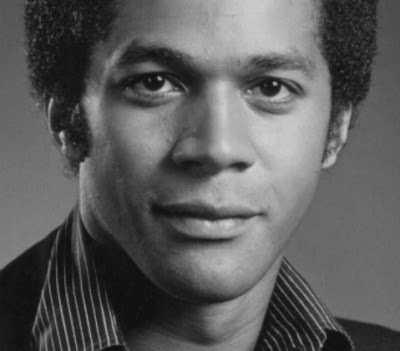 "Never Can Say Goodbye" was written by renaissance man Clifton Davis years before he became Rev. Ruben Gregory. The song was originally recorded by the Jackson 5 for their Maybe Tomorrow album and is arguably one of the most exquisite performances by a young Michael Jackson. Davis also contributed the title track to Lookin' Through the Windows and "Uppermost" (Skywriter) to the Jackson 5 during this period. Issac Hayes' version of the song appears on his career defining double-album Black Moses (1972); If the J5 version was the wistful romancing of a 12-year-old, Hayes' version was a grown man making demands. Before she became Ms. "I Will Survive," Gloria Gaynor was largely known for her "disco-ized" version of "Never Can Say Goodbye". All three versions of the songs were top-25 Pop hits, with the J5's version peaking at #2.
"Never Can Say Goodbye" was written by renaissance man Clifton Davis years before he became Rev. Ruben Gregory. The song was originally recorded by the Jackson 5 for their Maybe Tomorrow album and is arguably one of the most exquisite performances by a young Michael Jackson. Davis also contributed the title track to Lookin' Through the Windows and "Uppermost" (Skywriter) to the Jackson 5 during this period. Issac Hayes' version of the song appears on his career defining double-album Black Moses (1972); If the J5 version was the wistful romancing of a 12-year-old, Hayes' version was a grown man making demands. Before she became Ms. "I Will Survive," Gloria Gaynor was largely known for her "disco-ized" version of "Never Can Say Goodbye". All three versions of the songs were top-25 Pop hits, with the J5's version peaking at #2.
Published on June 08, 2015 12:39
“Keep running your mouth…”: The Policing of Black Children by Mark Anthony Neal
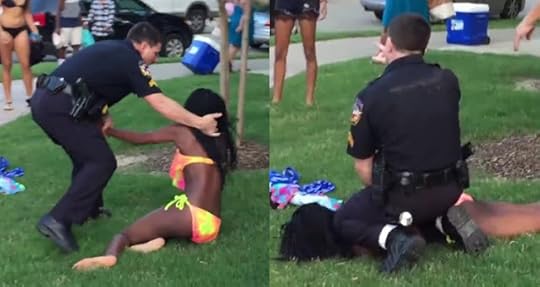 “Keep running your mouth…”: The Policing of Black Childrenby Mark Anthony Neal | @NewBlackMan | NewBlackMan (in Exile)
“Keep running your mouth…”: The Policing of Black Childrenby Mark Anthony Neal | @NewBlackMan | NewBlackMan (in Exile)As a practice I rarely share video footage of the on-going assaults on Black humanity in the United States. Such footage seems a diversion to me; simply the ocular confirmation of the always already known, the always already seen; body cameras ain’t nothing but a cliche of power. More to the point, our seeming addiction to the sharing of such footage often takes away from the building that is necessary to move towards some semblance of freedom, whether we define it as the freedom to or the freedom from; neither have been consistently available to Black bodies in this country.
Admittedly I was stunned by the footage that emerged from McKinney, Texas, a suburb of Dallas-Forth-Worth and a city regularly cited as one of the fastest growing in the United States. Apparently it is also a city in which the very sight of Black Youth illicit a level of panic, that necessitates the emergence of law enforcement as a temporary occupying force and as agents of forced removal.
What we see in that video is not anything new; Black children have long been criminalized for being children and acting accordingly. White youth are not immune to acting stupid, but rarely do their acts of stupidity have them sitting on well manicured lawns wearing plastic bracelets awaiting their introduction to the criminal justice system. Too many Black children are denied the opportunity to be children, in a society in which Black adults are rendered as animals--something less than human--and Black children are treated as adults. Creating spaces for my daughters to be children has been one of the most important things that my wife and I have done as parents.
Yet what what tore at my spirit was not simply what I saw, but what I heard: “Keep running your mouth...” a provocation from one of those said law enforcement officers, directed at a 14-year-old Black girl, whose only crime was being a Black girl who had the critical capacity to interpret her circumstances and those of her peers, and raise legitimate concerns about the absurdity of those circumstances. I have known many Black girls who would have acted the same way; I am helping to raise two of them.
The footage that ensues after that initial provocation is chilling; a grown-ass man, tosses a 14-year-old girl like she was the ragdoll she was likely still playing with three years earlier. The officer--too respectful of a term in my mind--then proceeds to slam the girl’s face into the grass while placing his knee on her back; he likely outweighs her by 70 pounds. Too be sure we’d be hard-pressed to think of an example of 13 or 14-year-old White girl would be treated in such manner.
The 14-year-old Black girl, of course, posed no threat to the officer’s safety, but she was to be made an explicit example of his power, which she challenged, because she was willing to speak her mind; “keeping running your mouth…(and see what will happen).”
The exchange and subsequent violence resonated with me, sot simply because I’m the parent of Black girls, but because I have spent the better part the the current school year, advocating on behalf of my youngest daughter, who like the young girl in the video is unafraid to read a situation and speak the truth of the moment. Like the teachers who have chastised my daughter for “talking back” or “getting in the face” of her peers, I can easily imagine that officer viewing my daughter as a threat to his sense of power. This is about more than law enforcement practices, but the ways our children are sanctioned, punished and policed within institutions empowered to regulate them.
The difficulty of this moment is weighing an appropriate response to my daughters, given the punitive reactions to their ability to articulate critical intellectual sensibilities about the world they live in.
It is their right as children -- as humans -- to speak as children do; it’s my job to protect that right.
Published on June 08, 2015 07:40
"Young Bucks" - MK Asante ft. King Mez -- Music + Visuals
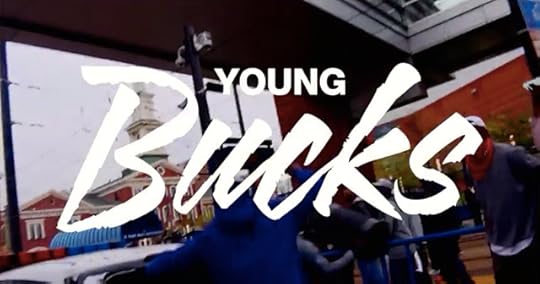
Filmed in Baltimore during the uprising, "Young Bucks" ft. King Mez is the lead single from the Buck: Original Book Soundtrack by MK Asante. Presented by Javotti Media. Produced by J-Mac and Commissioner Gordon. Directed by MK Asante.
Published on June 08, 2015 06:17
June 7, 2015
How Jaden Smith And The #Carefreeblackboy Movement Are Redefining Black Masculinity
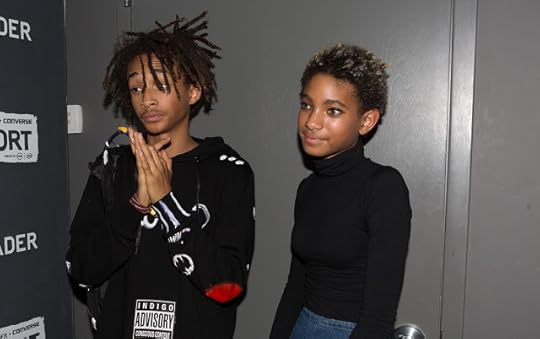 How Jaden Smith And The #Carefreeblackboy Movement Are Redefining Black Masculinityby Zeba Blay | @ZBlay | HuffPost BlackVoices
How Jaden Smith And The #Carefreeblackboy Movement Are Redefining Black Masculinityby Zeba Blay | @ZBlay | HuffPost BlackVoicesA few years ago, the “carefreeblackgirl” hashtag populated social media with photos of black women with candy-colored afros and waist-length braids adorned with flower crowns. It was an answer to the restrictive stereotypes that have historically plagued black women, defining them as aggressive, sassy, strong and independent to a fault -- but rarely affording them any kind of complexity.
Now, the carefree black girl's quirky cousin, the carefree black boy, is getting attention.
Last month, photos of Amandla Stenberg and Jaden Smith caused an instant frenzy. The pair looked cooler than cool in their decidedly untraditional prom attire -- Stenberg rocking pastel box braids and Smith with his Basquiat-esque locs. Smith, 16, wore a long black dress underneath his blazer.
Smith's fashion sense has raised eyebrows before --- last June he was spotted wearing an all white Batman suit to Kim and Kanye West’s wedding, and has since worn the suit to his own prom. Often, the teen has been snapped by paparazzi in skirts and dresses, and this year at Coachella he wore a flower crown in his hair.
The teen’s sartorial choices may be perplexing to some, but it represents the exciting new ways in which young black men are challenging ideas about masculinity. If young black women like Zoe Kravitz, Solange Knowles, Zendaya, and Willow Smith have become the poster girls of #carefreeblackgirl, then black boys and men including Jaden Smith, Frank Ocean, Jussie Smollet, and Dev Hynes are the epitome of the #carefreeblackboy.
On social media, the concept is evolving. A perusal of the hashtag on Tumblr and Twitter brings up Black male bloggers and artists like James Youth, James Phlemuns, and Brandon Stanciell. On their respective blogs, they post self portraits and selfies that receive thousands of likes and reblogs. The photos are often reminiscent of #carefreeblackgirl images -- they're quirky, offbeat pictures that display a mixture of vulnerability and strength.
The rise of the carefree black boy goes beyond acceptance of flower crowns. As #Blackout, #Blacklivesmatter, and the Afropunk festival become more prominent, young people in the African American community have been able to present themselves in ways that buck stereotypes and redefine blackness.
Weirdness or quirkiness are not traits that have often been praised or even acknowledged in the black experience. There have been very few depictions of black alternative characters in media -- perhaps Lisa Bonet’s Denise Huxtable is the earliest example, but she’s one of very few. With so few reference points, young black people have not been given the same freedom as white kids to embrace nonconformity. That inability to explore and experiment has, in many ways, been detrimental.
In a society that deems young black men hyper-aggressive and hyper-masculine and teaches boys across the spectrum to bury their feelings, being carefree in any capacity is a way to push against those unfair expectations.
When Jaden Smith wears a dress to prom, when Jussie Smollett posts a video of himself singing at the top of the lungs while driving, it chips away at the negative images of black men that have dominated for so long -- a reminder that black men are not a monolith, and blackness is ever changing. In the age of Ferguson and Baltimore, the idea of a carefree black boy is not only vital, it’s radical.
+++
Zeba Blay is a Ghanaian-born film, television, and culture columnist. She is a New School Academic Fellow and a participant in the Indiewire Critics Academy. Her work has appeared on Afropunk, Criticwire, Digital Spy, and Slant magazine amongst others. She runs the movie commentary blog Film Memory.
Published on June 07, 2015 05:42
Marketplace: Living at Risk in Baltimore
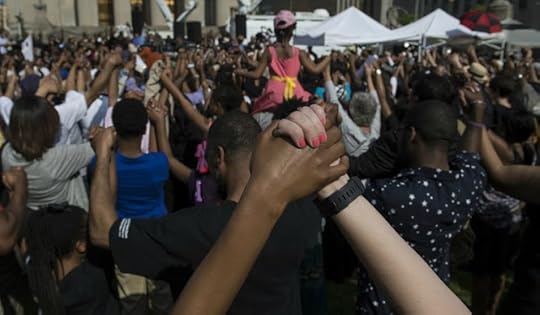 Marketplace's Lizzy O'Leary talks with Baltimore activist and accountant Munir Baharabout the economic realities for low income Black youth in the city. According to Economists
Raj Chetty and Nathaniel Hendren
future earnings of a poor Black youth in Baltimore declines 1.5% every year they live in the city.
Marketplace's Lizzy O'Leary talks with Baltimore activist and accountant Munir Baharabout the economic realities for low income Black youth in the city. According to Economists
Raj Chetty and Nathaniel Hendren
future earnings of a poor Black youth in Baltimore declines 1.5% every year they live in the city.
Published on June 07, 2015 04:46
The Black Advertising Pioneer Who Changed How Marketers Talk To People Of Color
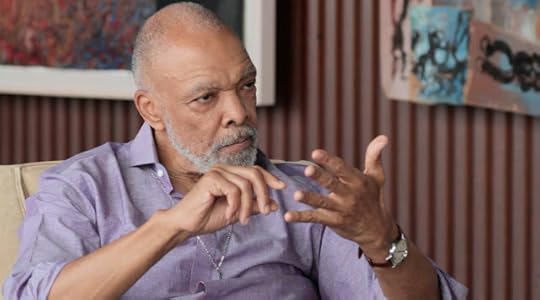 Tom Burrell was pathfinder in the field of advertising, among his great successes was the "Calvin" McDonald's commercial. The author of
Brainwashed: Challenging the Myth of Black Inferiority
is profiled by NPR's Planet Money.
Tom Burrell was pathfinder in the field of advertising, among his great successes was the "Calvin" McDonald's commercial. The author of
Brainwashed: Challenging the Myth of Black Inferiority
is profiled by NPR's Planet Money.Listen Here
Published on June 07, 2015 04:21
Soul vs. Soul: "The Broken Vessel / The Potter"--The O'Neal Twins + Dave Hollister
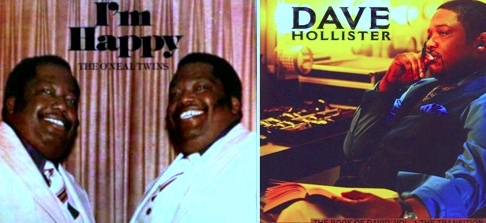 The late
O'Neal Twins
are one of those groups that reside in the deep knowledge of the Black Gospel tradition. Edward and Edgar O'Neal were perhaps most well known outside of the Gospel world for their appearance in the acclaimed documentary
Say Amen, Somebody
. Dave Hollister, the High-Priest of "Thug Soul" ("BabyMamaDrama") was aware enough of the twins to cover their 1978 classic "The Broken Vessel" also known as "The Potter" on his first gospel release The Book of David: Vol 1 The Transition (2006).
The late
O'Neal Twins
are one of those groups that reside in the deep knowledge of the Black Gospel tradition. Edward and Edgar O'Neal were perhaps most well known outside of the Gospel world for their appearance in the acclaimed documentary
Say Amen, Somebody
. Dave Hollister, the High-Priest of "Thug Soul" ("BabyMamaDrama") was aware enough of the twins to cover their 1978 classic "The Broken Vessel" also known as "The Potter" on his first gospel release The Book of David: Vol 1 The Transition (2006).
Published on June 07, 2015 03:51
Mark Anthony Neal's Blog
- Mark Anthony Neal's profile
- 30 followers
Mark Anthony Neal isn't a Goodreads Author
(yet),
but they
do have a blog,
so here are some recent posts imported from
their feed.



